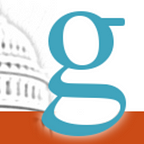Senate votes down bill to increase Federal Reserve transparency
On Thursday, the Senate voted against Sen. Rand Paul (R-KY)’s Federal Reserve Transparency Act of 2015, a bill that would have opened up the Federal Reserve System to a more complete audit.
The bill, long advocated for by Paul and his father, former Rep. Ron Paul (R-TX), was rejected by a vote of 53–44, with most Republicans voting in favor and most Democrats voting against. Sixty votes were needed to advance the bill.
What would the “Audit the Fed” bill have done?
Under current law, the Federal Reserve System (“the Fed”) — a quasi-governmental organization that acts as the country’s central bank— does undergo regular audits. Private audit firms, like Deloitte & Touche, conduct audits of the Fed’s financial statements (here’s one from last March) and the Government Accountability Office, a government agency, conducts audits of the Fed operations and activities (here’s one from September).
But the law currently restricts all auditors —both private companies and government agencies —from looking at some specific areas of Fed activity, including:
- transactions with a foreign government, its central bank, or international financing organizations
- deliberations, decisions, or actions on monetary policy matters
- transactions made under the direction of the Federal Open Market Committee
These audit restrictions were passed by Congress in 1978 and signed into law by President Jimmy Carter. They are intended to protect the Fed and its long term goals — like sustainable economic growth and low levels of inflation —from the short term goals of politicians, like winning their next election.
Paul’s bill would have permanently struck these audit restrictions from law and opened up the Fed to full audits of their monetary policy decisions. It would also have called for the Comptroller General to conduct a full audit of the Fed within 12 months and submit its findings and recommendations to Congress.
Why Rand Paul introduced the bill
The Fed is a “political, oligarchic force, and a key part of what looks and functions like a banking cartel,” he wrote in an op-ed in Time. He added, “we actually don’t know the full extent of or the precise recipients of the Fed’s asset purchases and bailouts as its balance sheet exploded from about $900 billion in August 2008 to almost $4.5 trillion today.”
“The Fed operating under a cloak of secrecy has gone on for far too long,” Paul said in a statement. “The American people have a right to know exactly how Washington is spending their money.”
Paul introduced a similar Fed audit measure in 2013, but that bill never received a Senate vote and died when the 113th Congress ended.
Why Democrats voted against the bill
Sen. Harry Reid (D-NV), the Democratic leader, said in a statement that reforms passed after the 2009 financial crisis have lead to more audits. “Proponents of this bill know that. Their calls for audits have been answered,” he said. “Let’s be clear, this bill is not about auditing the Federal Reserve. It’s not about transparency or book keeping. . . . It is an attack on policies that are designed to stabilize the US Economy and help the middle class bounce back.”
Sen. Tammy Baldwin (D-WI) was the lone Democrat voting for the bill.
What even is the Federal Reserve?
The Federal Reserve (“the Fed”) is a quasi-governmental organization that was created by Congress in 1913 and given a mandate to “promote stable growth, high levels of employment, stability of prices to help preserve the purchasing power of the dollar, and moderate long-term interest rates.”
The Fed uses monetary policy to influence the economy, and it has several different tools at its disposal with which to do this. It sets a target interest rate for bank reserves borrowing and it influences the reserves market to achieve that target through the buying and selling of U.S. securities. It also sets a discount rate and lets banks take out low-interest loans in order to provide extra liquidity when it is needed. Additionally, the Fed plays a supervisory and regulatory role, and it helps to ensure that banks are operating in accordance with all applicable banking laws and regulations.
During the recent financial crisis, the Fed acted as the lender of last resort and extended emergency loans to financial institutions that would not have had access to necessary credit otherwise. From August 2007 through April 2010, the Fed made available more than $1 trillion in public money to banks and other financial institutions.
